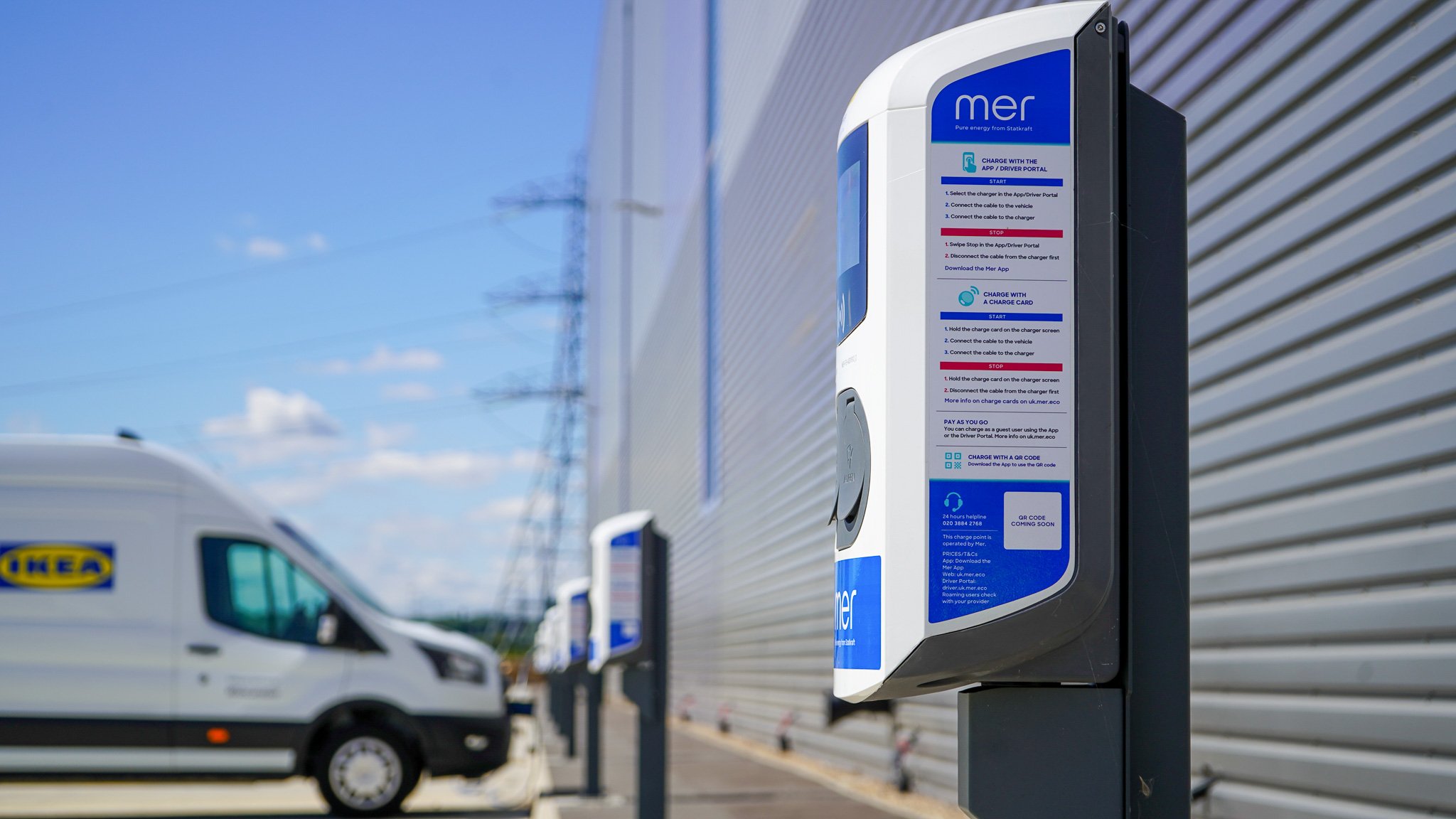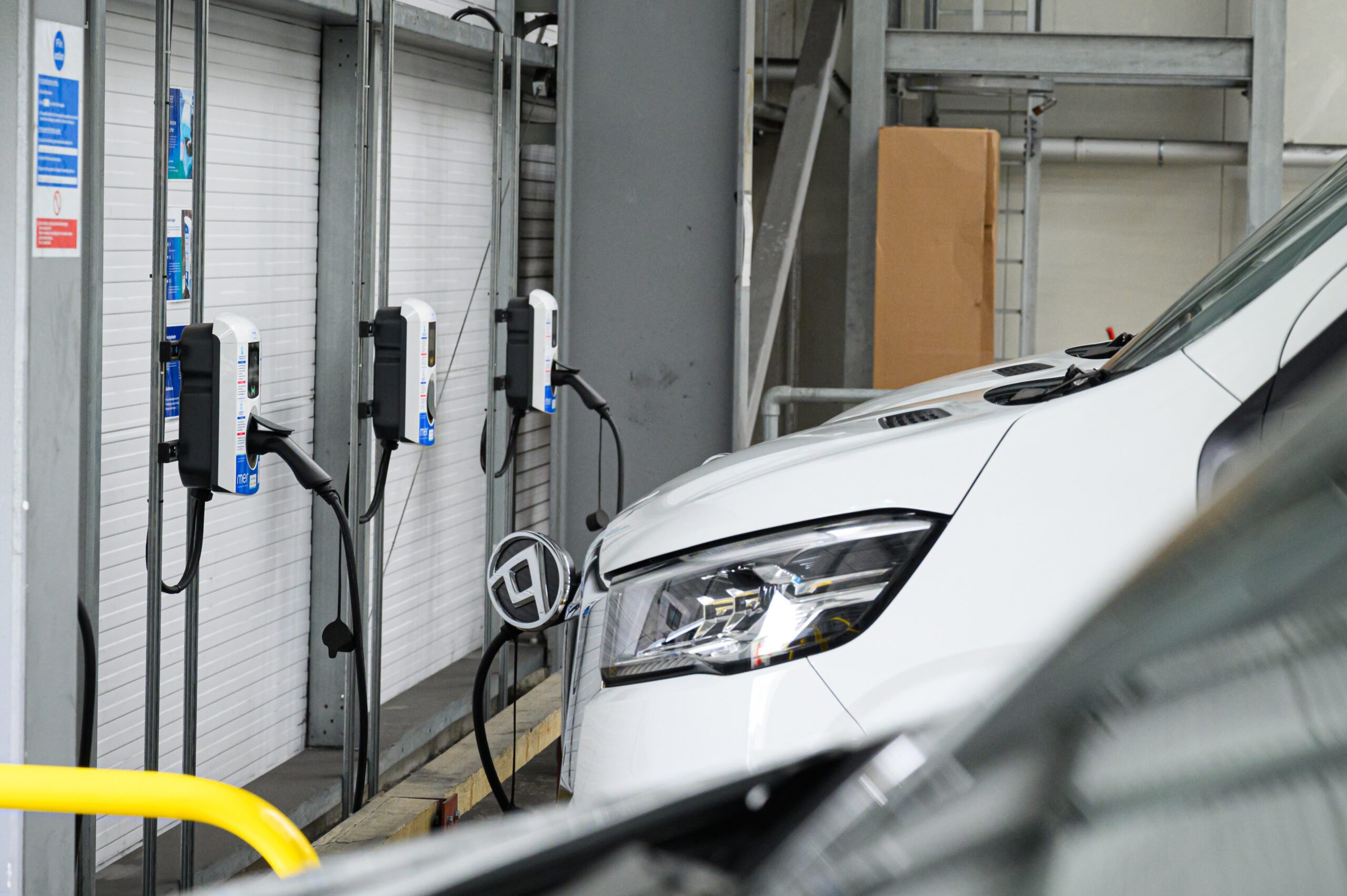Failing to plan your charging infrastructure first can put commercial EV roll-out at risk. Natasha Fry, head of sales for fleet and workplace charging at Mer looks at how businesses are addressing the challenges of electrifying commercial vehicles and last mile delivery fleets. There’s also an opportunity to learn more at an upcoming webinar.
Commercial and delivery fleets are the backbone of the UK’s economy. Without them, goods wouldn’t get to outlets and customers, and commerce would grind to a halt. That’s why the electrification of commercial and last mile delivery vehicles (LMD) is not something to be handled lightly. By focusing solely on the vehicles, fleet managers run the risk of overlooking a critical component of the transition to EV and low-carbon deliveries. That is the EV charging infrastructure. Electric delivery vehicles need to be powered so that they are available when they are needed, and with sufficient power to deliver their payloads on predictable and unpredictable routes. That is some undertaking for commercial and LMD fleet managers. They are now having to learn a whole new set of skills to understand and manage the complexities of meeting EV charging requirements efficiently, while taking into account the business’s other power demands.
There’s complexity involved
At Mer, we’ve seen what happens when a business focuses on how to switch its existing fleet to EVs without factoring in the challenge of how to charge them. A charging infrastructure sufficient for LCVs and LMDs can involve provisioning tens of megawatts of power. This requires permissions and engineering work to secure multi-megawatt grid connections from the grid, which can take months or even years. The processes that businesses and distribution network operators (DNOs) need to go through to upgrade supply and bring in new connections are complex and involve many variables. It calls for specialist knowledge and experience.
Overcoming complexity
That is one of the reasons why IKEA, the Swedish furniture giant, called on Mer’s EV charging expertise, analysis and consultative approach to make the biggest EV charging infrastructure investment for last-mile deliveries in the UK to date.
Mer’s analysis of how vehicles operated at each depot, enabled an accurate calculation of how many rapid chargers and fast chargers IKEA would need, which Mer is installing.
In total the company has invested £4.5 million in power grid upgrades and the installation of 200 Mer chargers, including 40 rapid chargers, in 2023. The charging posts are located at every IKEA store as well as at its Dartford Customer Distribution Centre.
It was a similar story for DX Group, an end-to-end mail, parcels and logistics network operator that runs a fleet of over 850 vehicles from its 87 depots. The business sensibly took a phased approach and Mer initially installed 7kW chargers across its depots in Southampton and Warrington.
It starts with a site survey
Like many EV power infrastructure projects, it all started with a site survey. In our experience, no two sites are the same. Site surveys at every depot are ideal to gain a proper understanding of what power is currently available, what will be required, how to bridge any gaps by upgrading the site infrastructure, and what that involves. Putting the legwork in upfront saves time and money further down the line to ensure that corporate electrification objectives are met at each site.
The CEO of DX (Group), Paul Ibbetson plc, summed up the challenge neatly, “Our vehicles are business-critical assets that are a key component in the high level of service we provide to our clients. Therefore, we needed an EV charging partner who could prioritise reliability of infrastructure. Our drivers need to know that when they arrive at the start of a shift, those vehicles are fully charged and ready to go.”
Without a true understanding of the power availability at each depot, and the cost implications of any necessary grid upgrades, the roll-out of commercial and last mile EV delivery fleets risks being delayed while budgets are revised upwards.
Go in with your eyes open
Inevitably, upgrading grid connections comes at a price and takes time. Understanding that in the early stages means you go into it with your eyes open. Some last mile logistics operators will be prepared to increase budgets to meet existing targets, while others might prefer to take a more phased approach starting with ‘low hanging fruit’ for a quick win to prove the concept. We recognise the need to take a pragmatic approach to win support in the boardroom for what will be a big undertaking for any business.
Learn from experience
Join Mer and its customers to talk about their experience switching to electric vehicles for last mile deliveries at a webinar on 15th May 2024. Registrations are open now on Mer’s website. You will also receive a free eguide bespoke to last mile logistics operators when you register.
Author: Natasha Fry, head of sales for fleet and workplace charging at Mer






















